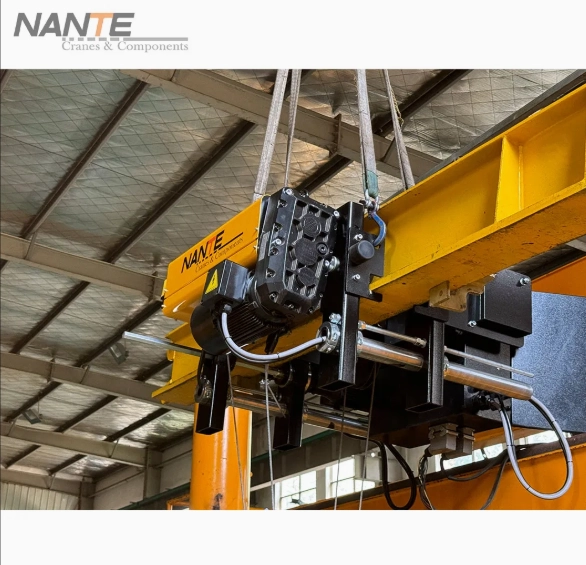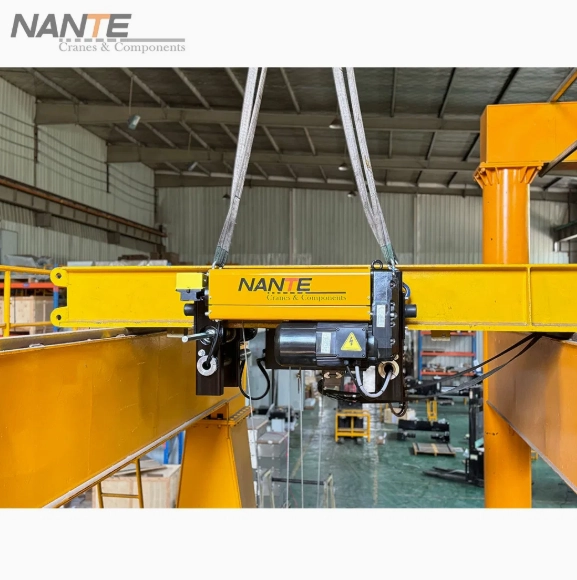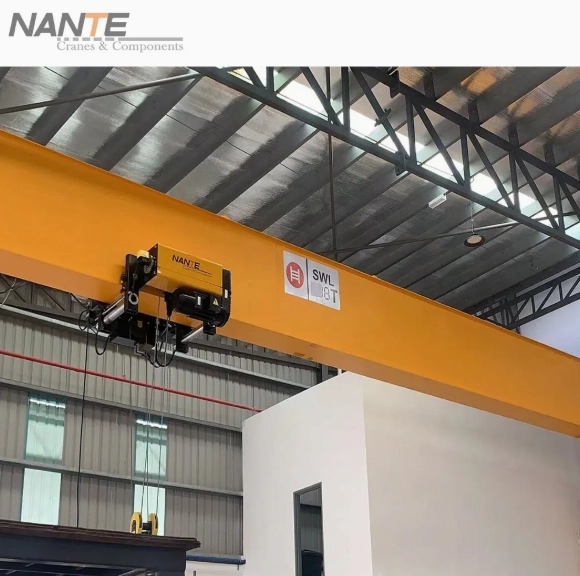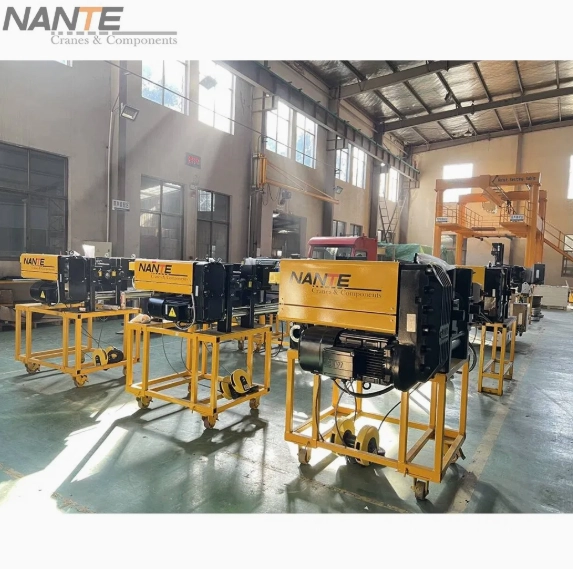How to Choose the Best Electric Hoist for Overhead Crane Applications
How to Choose the Best Electric Hoist for Overhead Crane Applications
Date: 2025-07-11 Share:
Introduction
Electric hoists are vital parts of overhead crane systems in factories, warehouses, and building sites. They lift and move heavy stuff, making work quicker and safer. Picking the right electric hoist is key to fit your factory’s needs, keep workers safe, and make work smoother. This guide shows how to choose the best electric hoist for overhead cranes without naming specific brands. We’ll talk about types, important factors, and steps to make a smart choice for your work.
Understanding Electric Hoists
Electric hoists are machines that lift heavy things using a motor. They have parts like a motor, gearbox, load chain or wire rope, and a control system. In overhead cranes, hoists lift and move things like steel beams, machines, or pallets. They are strong, dependable, and made for tough work places. Benefits include fast lifting, less hand work, and safe handling of heavy loads, making them super important for factories.
Types of Electric Hoists
Chain Electric Hoists
Chain electric hoists use a metal chain to lift loads. They are small, light, and simple to use. Benefits include lower price, easy to move, and good for tight spaces. They work great for lifting lighter loads (0.5 to 10 tons) in workshops or warehouses. They are used for moving tools, parts, or small machines. But they can’t handle super heavy loads or tough conditions like dust or water as well.
Wire Rope Electric Hoists
Wire rope hoists use a steel cable wrapped around a drum to lift loads. They are tougher and last longer than chain hoists. Benefits include lifting heavy loads (1 to over 250 tons), exact control, and standing up to rough places like heat or dust. They are used for lifting big machines or steel in factories or shipyards. Downsides are higher cost, bigger size, and trickier upkeep.
FEM Standard Hoists
FEM (European Federation of Materials Handling) standard hoists follow strict global design rules. They can be chain or wire rope hoists but are made for top performance and safety. Benefits include saving energy, being quiet, and lasting a long time. They are used in modern factories needing safe, reliable lifting. The downside is higher cost because of fancy features and strict rules.
Key Factors to Consider
Choosing the right electric hoist means looking at several things to match your factory’s needs:
Load Capacity
The hoist must lift the weight of your loads, including tools like slings or hooks. For example, lifting a 10-ton machine needs a hoist rated for at least 10 tons. Always add extra safety room to avoid overloading.
Suspension Type
Hoists can be fixed (stuck in one spot) or trolley-mounted (move along a crane’s beam). Trolleys can be pushed by hand, geared, or motor-driven. Pick based on whether the hoist needs to move or stay put.
Lift, Reach, and Headroom
Lift is how high the hoist can raise a load. Reach is how far it moves along a crane. Headroom is the space needed above the hoist. Measure your workspace to make sure the hoist fits and lifts high enough.
Operation Type
Manual hoists are cheaper but slower, good for light, rare lifts. Powered hoists (electric or air-driven) are faster and better for frequent or heavy lifting. Choose based on how often and how heavy you lift.
Lifting Speed
Hoists have single-speed (one speed), two-speed (fast and slow), or variable speed (adjustable). Variable speed gives more control for exact tasks, like lining up parts on a work line.
Power Supply
Check if your factory has single-phase power (for smaller hoists) or three-phase power (for heavy hoists). Make sure the hoist matches your power to avoid setup problems.
Control System
Hoists use pendant controls (wired or wireless) to work. Look for safety tools like emergency stop buttons, load limiters (to stop overloading), and heat protection (to keep the motor from getting too hot).
Dimensional Constraints
Think about headroom (space above), side clearance (space beside), and end approach (space at crane ends). A low-headroom hoist is great for small spaces.
Duty Cycle
Duty cycle is how often and how hard the hoist is used. ASME and HMI standards rate hoists from H2 (light use) to H5 (heavy, nonstop use). Pick a hoist that fits your workload to last longer.
Environmental Conditions
Factories can be dusty, wet, or hot. Choose hoists with rust-proof coatings or sealed motors for tough places. For extreme spots, like chemical plants, pick explosion-proof hoists.
Safety Features
Look for load limiters, brakes, heat protection, and emergency stops. These stop accidents, like dropping loads or breaking the hoist, keeping workers safe.
Selecting the Right Hoist: A Step-by-Step Process
Follow these steps to pick the best electric hoist:
Step 1: Check Load Needs and Duty Cycle
Figure out the heaviest load weight and how often the hoist will work. For example, lifting 5 tons every day needs a higher duty cycle than lifting 2 tons sometimes.
Step 2: Look at Work Environment and Space
Check the factory’s conditions (dust, water, heat) and measure lift height, reach, and headroom to make sure the hoist fits.
Step 3: Pick Hoist Type Based on Load and Use
Choose chain hoists for lighter loads in clean spaces or wire rope hoists for heavy loads in rough places. Think about FEM hoists for fancy features.
Step 4: Choose Power and Control Systems
Make sure the hoist’s power (single or three-phase) fits your factory. Pick a control system with safety tools like load limiters.
Step 5: Check Size and Setup Needs
Confirm the hoist fits your crane and workspace. Look for low-headroom options if space is tight.
Step 6: Look at Upkeep and Warranty
Choose hoists with easy upkeep and good warranty terms to save money and reduce downtime.
Additional Considerations
Cost and Savings
Electric hoists have different prices. Chain hoists are cheaper but only for lighter loads. Wire rope and FEM hoists cost more but lift heavier stuff and last longer. Think about savings from faster work and less fixing.
Energy Use and Noise
Modern hoists, like FEM models, use less power and are quieter. This saves money on energy and makes a nicer work place, especially in busy factories.
Custom Options and Support
Some hoists can have special features like anti-sway systems or data trackers. Good support, like spare parts and tech help, keeps your hoist working well.
Maintenance and Safety
Importance of Regular Upkeep
Regular care keeps hoists safe and working. Grease chains or ropes to reduce wear. Check motors, gearboxes, and controls for problems. Test safety tools like brakes and load limiters. Follow a care schedule (like every six months) to avoid breakdowns.
Operator Training and Safety Rules
Workers must learn to use hoists safely, following rules like ASME B30.16. Training covers using controls, checking loads, and wearing safety gear like helmets. Regular checks ensure safety rules are followed, stopping accidents.
Company and Product Introduction
About Nante Crane
Shaoxing Nante Crane Equipment Co., Ltd., in Shaoxing City, China, is a world leader in cranes and parts. They serve over 50 countries with 150+ partners and 5,000+ customers. Known for new ideas and quality, Nante has 12 invention patents and follows standards like EN ISO, FEM, and CMAA.
Product Range
Nante offers many electric hoists:
- NHA Series: European standard wire rope hoists (2t-63t) for heavy lifting.
- NHC Series: Wire rope hoists (1t-20t) with high efficiency and small design.
- CD/MD Series: Classic wire rope hoists (1t-20t) for dependable work.
- NCHA/NCHC Series: Chain hoists (0.25t-25t) for flexible lifting.
- NW Series: Special hoists for unique needs.
- Explosion-Proof Hoists: Safe for risky places.
Innovation and Quality
Nante works on research to make hoists with features like anti-sway and data logging. Their products meet global standards, ensuring safety and toughness for factory use.
Need the perfect electric hoist for your overhead crane? Contact Nante Crane at sales@nantecrane.com or +86 575-81260826. Visit https://www.nantecrane.com/ for custom solutions to make your factory work better and safer.







